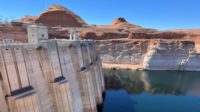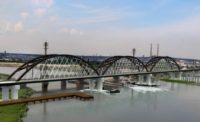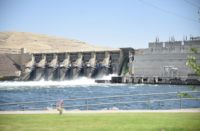The Lake Agassiz Water Authority board voted unanimously in September to study further a $781-million water-pipeline project proposal that would deliver water from the Missouri River to communities in eastern North Dakota's Red River Valley. Another plan, the $660-million Red River Valley Water Supply project, passed environmental review five years ago but has not advanced because of inaction on the part of the federal government.
The previous project, which is dependent on federal approval and funding, includes plans that would use the existing Snake Creek pumping station and McClusky Canal as well as a new 123-mile pipeline to convey Missouri River water to Lake Ashtabula. The diverted flow would be released to the Sheyenne River and onward to the Red River basin. Similar in route and design to the original plan, the alternative would use much of the same right-of-way; however, the plan circumvents the requirement for federal approval because it does not include the use of the federally owned pumping station and canal; instead, it relies on a longer pipeline.
"All along, we were under the impression that the project would be a federal, state and local partnership, but after waiting five years for a record of decision from the Dept. of the Interior, we have decided to further investigate a new plan that would be funded solely by state and local governments," said Bruce Furness, LAWA chairman and former Fargo mayor.
According to an environmental impact statement (EIS) completed in 2007 for the original water-supply project, Red River Valley water supplies would be inadequate during a severe drought similar to one that occurred in the region in the 1930s. Under such a shortage, 1,200 truckloads of water per day would be needed to supply Fargo's household water needs.
"During the 10-year drought of the 1930s, the Red River actually stopped flowing for a period of five months," said Dave Koland, LAWA secretary and general manager of the Garrison Diversion Conservancy District, which administers the Red River water-supply initiative. "If that were to occur today, the economic damages would be severe, amounting to $2 billion per year."
The LAWA would still prefer to move ahead with the original Red River Valley Water Supply project, Koland said, which was the preferred alternative identified in the 2007 EIS for meeting the water needs of eastern North Dakota.
However, with the Red River Valley region currently experiencing drought-like conditions, including 12 consecutive months of below-average rainfall, Koland said the LAWA cannot afford to wait any longer. "We have roughly a two-year backup supply of water, but the time frame is six years for building the pipeline project on an accelerated schedule," he said. "As such, waiting is no longer an acceptable solution. The unwillingness of the federal government will not stop us from securing water for our citizens."
Both plans include the construction of a water treatment plant for removing biota from water transferred from the Missouri River to the Red River, which eventually flows into Canada. According to the LAWA, the treatment plant remains a federal responsibility because of a boundary-waters treaty with Canada.






